
Mexico's output growth slows; outlook improves further

May 6, 2021
Mexico’s gross domestic product (GDP) growth slowed to a 1.6 percent annualized rate in first quarter 2021 from 13.7 percent in fourth quarter 2020. Nevertheless, the consensus GDP growth forecast for 2021 compiled by Banco de México increased from 3.7 to 4.5 percent in March.[1]
The upward revision was likely driven by stronger U.S. growth and increased synchronization in the global economic recovery. Mexico still faces headwinds from COVID-19. Supply and logistical issues have slowed vaccination progress, and a lack of testing could make a new outbreak hard to identify in a timely manner.
The latest data available show continued improvement in employment and industrial production, although exports and retail sales weakened based on a three-month moving average. The peso lost ground against the dollar in March, and inflation increased.
Gross domestic product growth decelerates
Mexico’s first-quarter GDP growth slowed considerably, falling below the quarterly average (Chart 1). Service-related activities (including trade and transportation) were up 2.8 percent. Goods-producing industries (including manufacturing, construction and utilities) were flat, while agricultural output fell 5.1 percent.
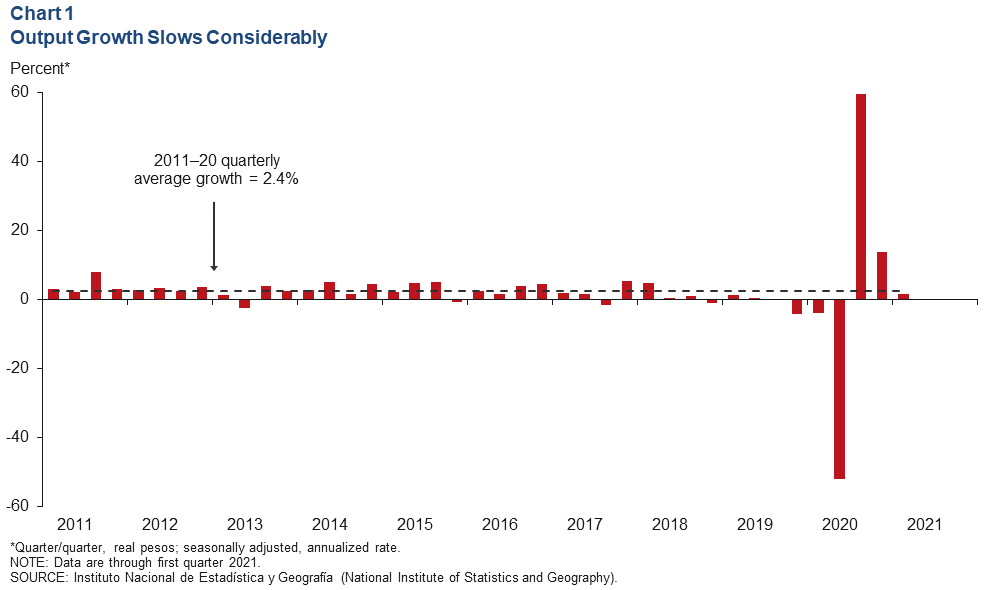
Exports weaken in recent months
The three-month moving average of total exports fell 0.3 percent in March as oil exports increased 6.9 percent but the dominant manufacturing category fell 0.8 percent (Chart 2). On a month-over-month basis, total exports rose 3.7 percent in March, and manufacturing exports increased 3.0 percent. Through March, exports were up 2.6 percent compared with the same period in 2020.
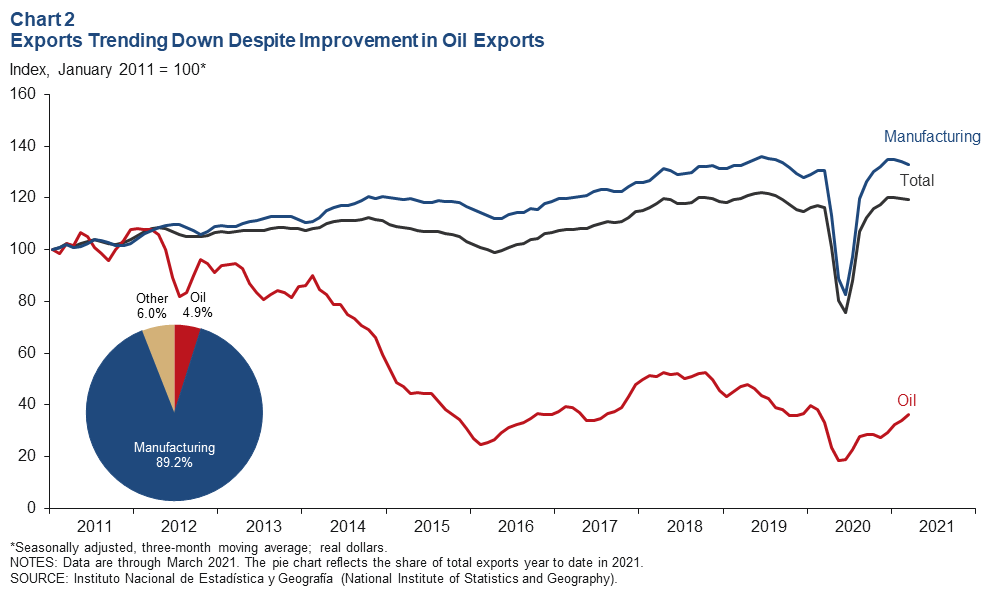
Industrial production inches up
The three-month moving average of Mexico’s industrial production (IP) index—which includes manufacturing, construction, oil and gas extraction, and utilities—increased 0.2 percent in February, but manufacturing IP by itself was down 0.6 percent (Chart 3). On a month-over-month basis, total IP was up 0.4 percent in February, while the manufacturing index fell 2.1 percent. North of the border, U.S. IP increased 1.4 percent in March after declining 2.6 percent in February, and the three-month average was down 0.1 percent. The correlation between IP in Mexico and the U.S. increased considerably with the rise of intra-industry trade as a result of the 1994 North American Free Trade Agreement, recently replaced by the United States–Mexico–Canada Agreement.
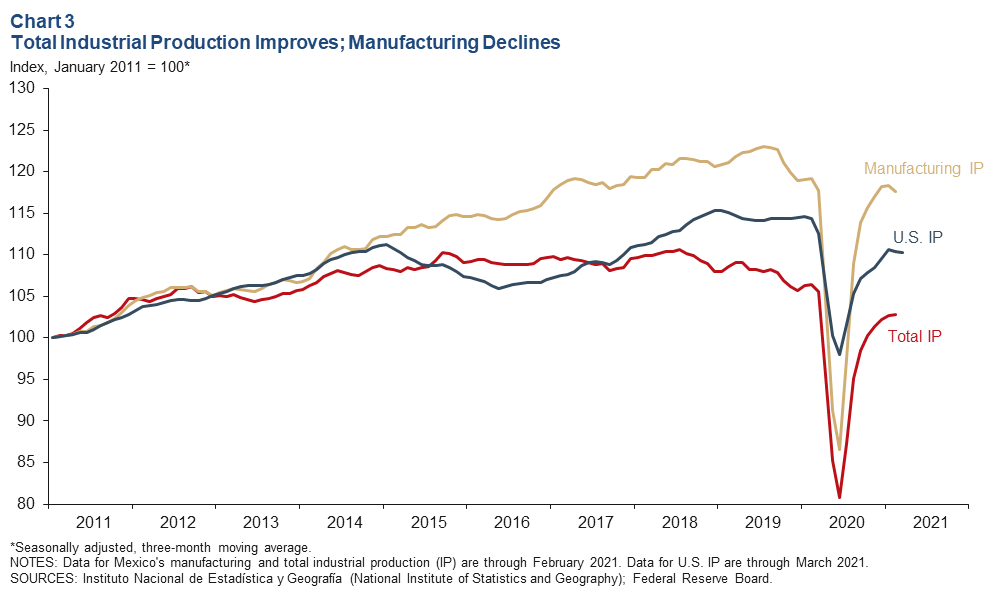
Retail sales weaken
The index of real retail sales in Mexico decreased 0.3 percent based on a three-month moving average through February (Chart 4). On a month-over-month basis, retail sales grew 1.6 percent in February after coming in flat in January .
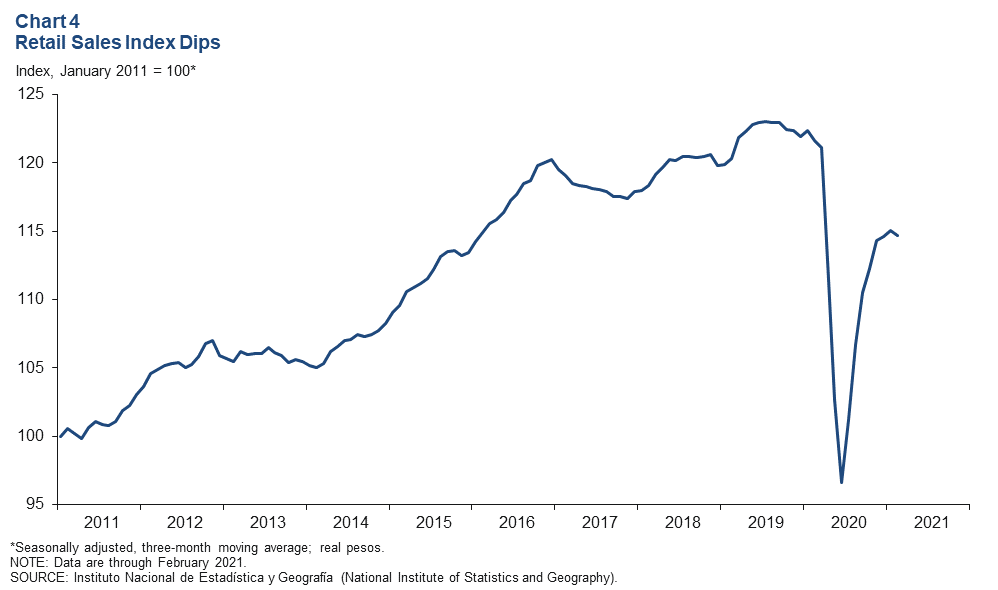
Payrolls expand in March
Formal sector employment—jobs with government benefits and pensions—rose an annualized 4.4 percent (71,200 jobs) in March, faster than February’s 3.0 percent increase (Chart 5). Year-over-year employment was still down 2.3 percent in March. Total employment, representing 53 million workers and including informal sector jobs, declined 4.2 percent year over year in fourth quarter 2020—far below its 10-year average rate of 1.9 percent. The unemployment rate in March was 4.4 percent, down from 4.5 percent in February but up from 3.3 percent a year earlier.
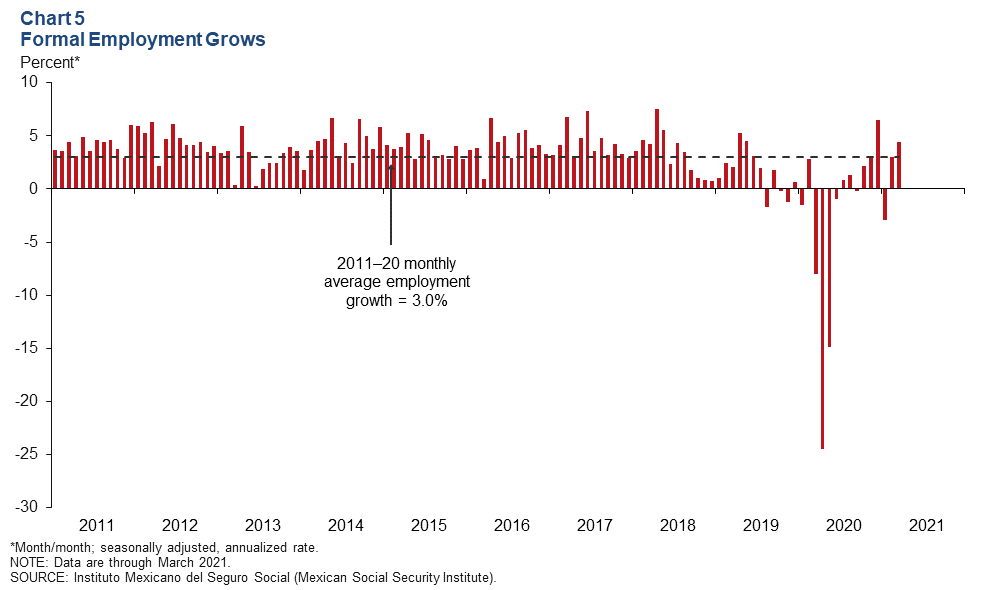
Peso loses ground against the dollar
The Mexican currency averaged 20.8 pesos per dollar in March—down 2.1 percent from February—but is up 16.9 percent since April 2020 (Chart 6). The Mexican peso has been under pressure due to increased uncertainty regarding the impact of COVID-19 on domestic and global growth.
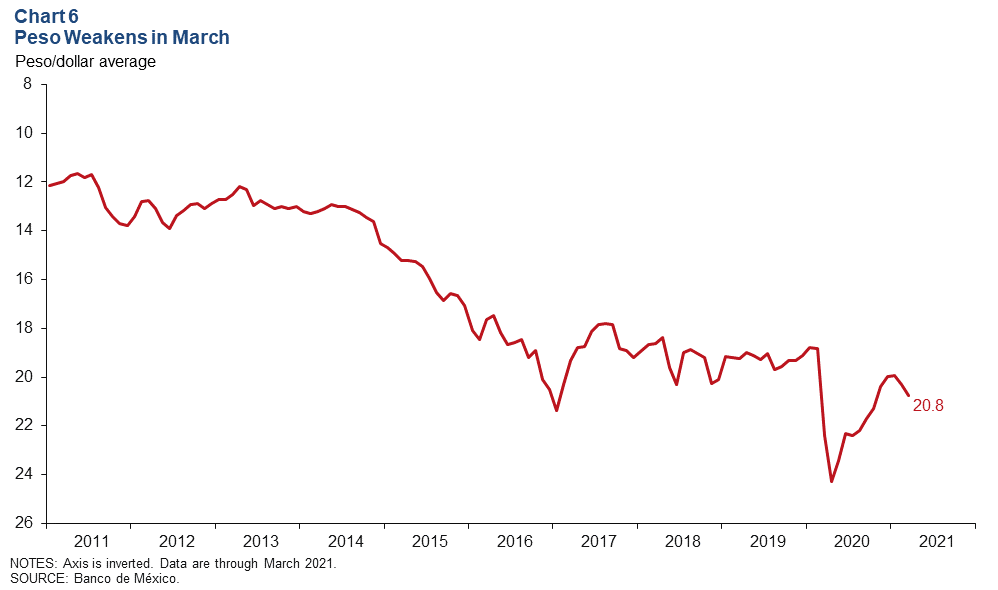
Foreign-owned government debt share decreases further
The share of peso‐denominated Mexican government debt held abroad fell to 20.5 percent in March. The three-month moving average decreased to 21.1 percent (Chart 7). The extent of nonresident holdings of government debt is an indicator of Mexico’s exposure to international investors and is also a sign of confidence in the Mexican economy.
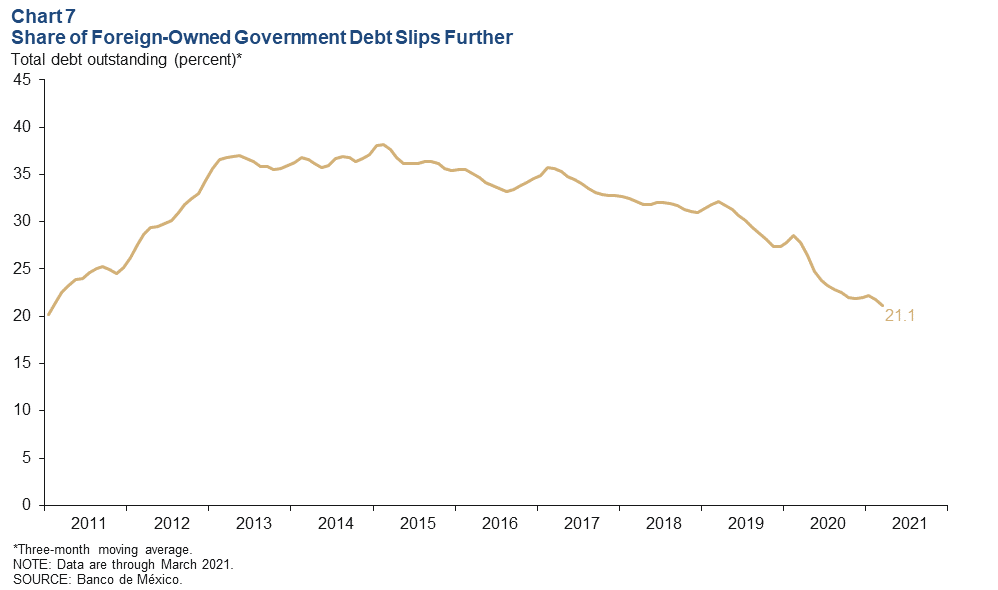
Inflation continues to rise
Mexico’s consumer price index (CPI) increased 4.7 percent in March over the prior 12 months, up from 3.8 percent in February (Chart 8). CPI core inflation (excluding food and energy) rose 4.1 percent in March over the previous 12 months. Banco de México held the benchmark interest rate at 4.0 percent on March 25 after cutting it by 25 basis points in February. The central bank cited inflation risks and the need to evaluate the impact of past easing as the main reasons for holding the rate steady.
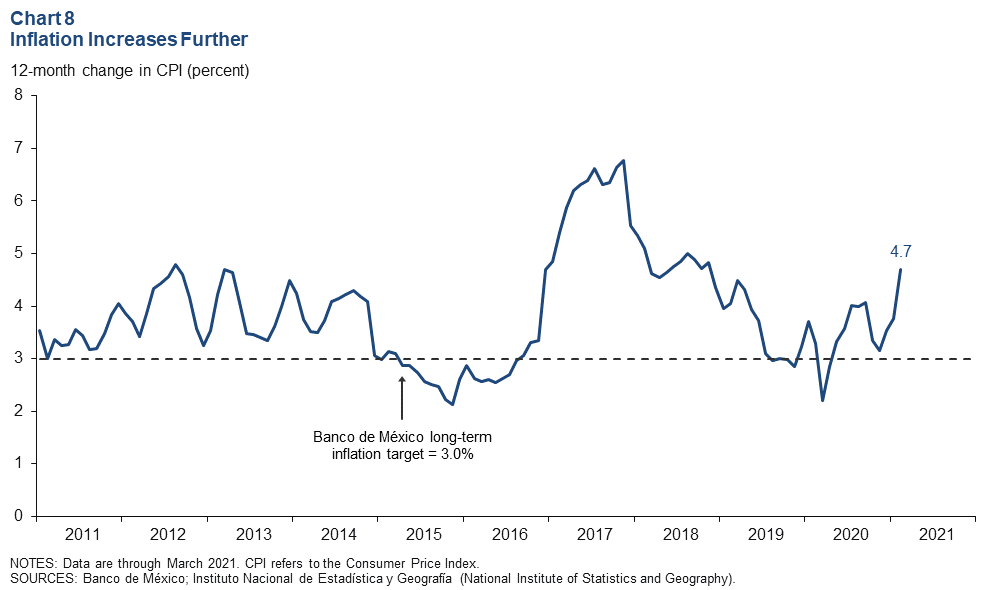
Notes
- Encuesta sobre las Expectativas de los Especialistas en Economía del Sector Privado: Marzo de 2021, (communiqué on economic expectations, Banco de México, March 2021). The survey period was March 25–29.
About the Authors
Cañas is a senior business economist, and Smith is a research analyst in the Research Department at the Federal Reserve Bank of Dallas.